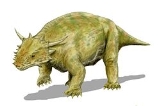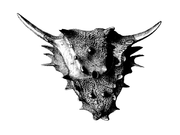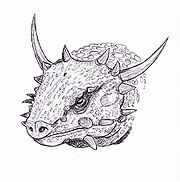
Elginia
Encyclopedia


Pareiasaur
The Pareiasaurs - Family Pareiasauridae - are a clade of medium-sized to large herbivorous anapsid reptiles that flourished during the Permian period....
; a member of a group of Late Permian
Permian
The PermianThe term "Permian" was introduced into geology in 1841 by Sir Sir R. I. Murchison, president of the Geological Society of London, who identified typical strata in extensive Russian explorations undertaken with Edouard de Verneuil; Murchison asserted in 1841 that he named his "Permian...
parareptiles which normally grew up to 3 metres (9.8 ft).
Elginia was a dwarf genus of pareiasaur, only about 60 centimetres (2 ft) long, with fossils found at Elgin
Elgin, Moray
Elgin is a former cathedral city and Royal Burgh in Moray, Scotland. It is the administrative and commercial centre for Moray. The town originated to the south of the River Lossie on the higher ground above the flood plain. Elgin is first documented in the Cartulary of Moray in 1190...
in Scotland
Scotland
Scotland is a country that is part of the United Kingdom. Occupying the northern third of the island of Great Britain, it shares a border with England to the south and is bounded by the North Sea to the east, the Atlantic Ocean to the north and west, and the North Channel and Irish Sea to the...
. Its head was covered in spike
Spike
Spike may refer to:-Device to puncture or fasten:* Nail , especially one over ten inches long* Rail spike, or Screw spike used to construct railroad tracks* Tree spiking, making a tree dangerous to cut with a chainsaw...
s, with the longest pair growing out of the back of the skull. These spikes were probably used for display rather than physical combat.

